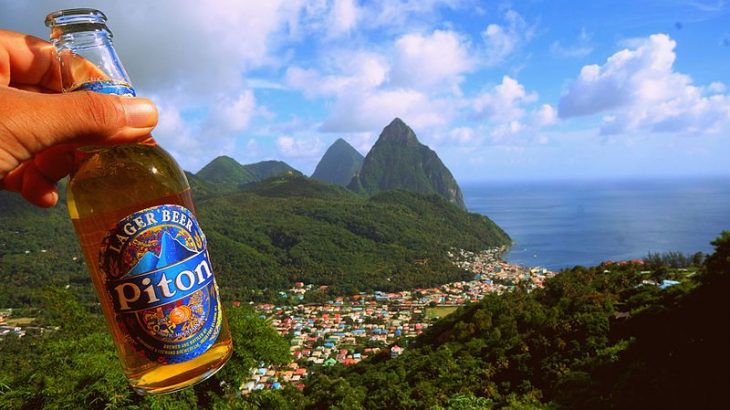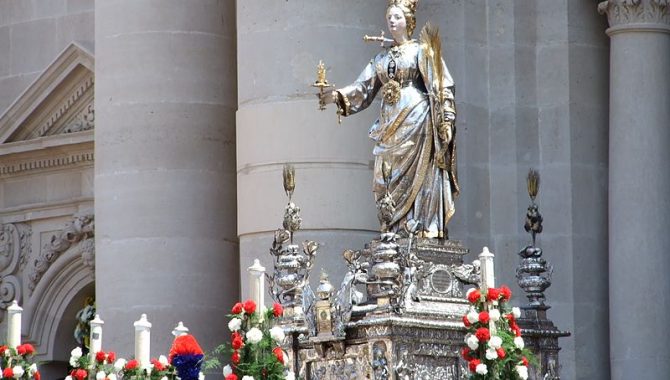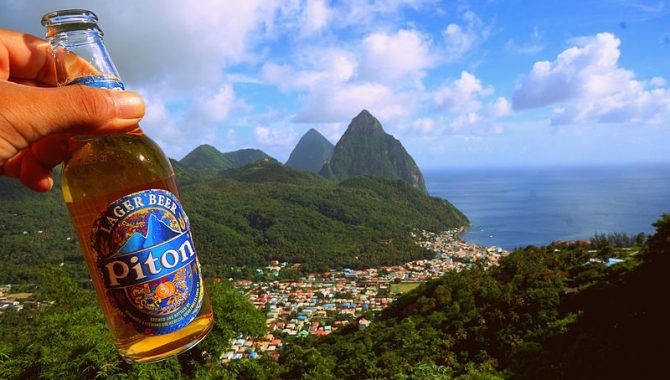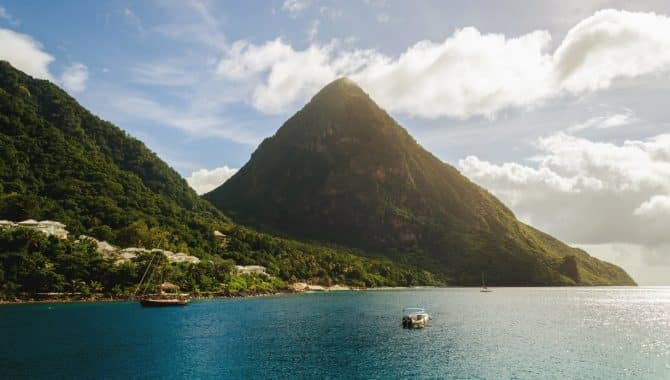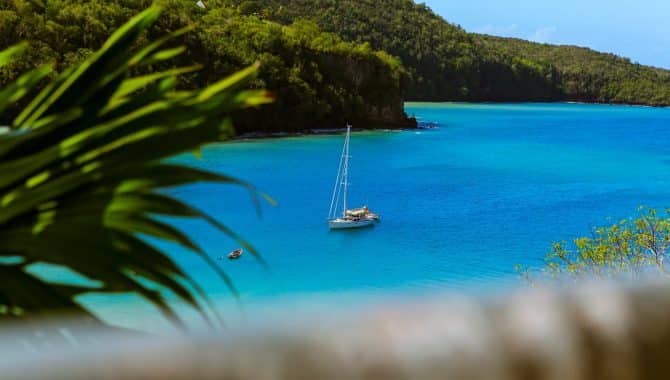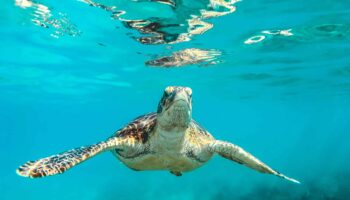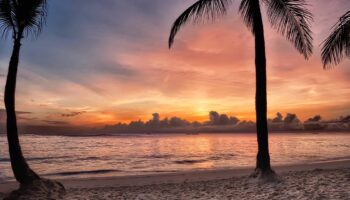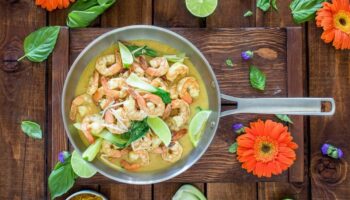You may have heard of it as the perfect destination for a honeymoon or romantic getaway, but there is so much more to this tiny island than meets the eye. Read on for the most interesting facts about St. Lucia.
10 Amazing Facts You Didn’t Know About St. Lucia
The Only Country in the World Named After a Woman
The island of St. Lucia is believed to be named after Saint Lucia of Syracuse. Allegedly, the idea came by a group of French sailors that were washed upon its shores after a shipwreck on December 13—the Saint’s feast day.
They Brew Their Own Local Pilsner Beer
Surprisingly enough, apart from all the Caribbean rum, visitors of St. Lucia can also get a taste of a local, home-brewed, delicious pilsner beer named Piton that is overly popular with the natives. The name comes from the island’s most iconic landmarks—Gros Piton and Petit Piton.
The World’s Only “Drive-in Volcano”
Sulphur Springs—or as advertised in St. Lucia the ‘’world’s only drive-in volcano’’—is an active volcanic pit that spews mud and sulfur, creating impressive natural hot spring baths. As the nickname suggests, visitors are able to drive all the way up to the edge of the springs for an astonishing view.
International Jazz & Arts Festival
Taking place annually with various events all around the country, the Saint Lucia Jazz & Arts Festival has a long-standing reputation of being one of the most spectacular events in the region. Jazz concerts, fashion shows, street parties and dance performances make for an unforgettable experience for those lucky enough to get a ticket.
The Birthplace of Two Nobel Prize Winners
In fact, this small Caribbean island has more Nobel laureates per capita than any other nation worldwide. The first Nobel prize came in 1979 and was awarded to Arthur Lewis for his accomplishments in economics, followed by the one won by Derek Walcott in 1992 for his contribution to literature and poetry.
Their National Bird is Called Jacquot
The country’s national bird called the Jacquot or St. Lucia parrot is an endemic species that almost became extinct in the 1970s. The colorful bird has always been extremely popular with the locals, inspiring songs and plays and even appearing on postage stamps.
Home of the “Pitons”
Declared a UNESCO World Heritage Site in 2004, the Gros and Petit Pitons are two volcanic spires that rise from the sea to create a natural secluded bay by the shore near the town of Soufrière. The two mountains are linked by the Piton Mitan ridge and the complex is home to some very impressive coral reefs, rare bird species and exotic plants.
The Perfect Climate
St. Lucia is a small slice of paradise on Earth, as its average temperature revolves around 27 degrees Celsius year round, making it the ideal destination for a beach holiday no matter the season.
The Island of Iguanas
St. Lucia boasts a very diverse indigenous wildlife. Among other species, the island is also home to several kinds of snakes, lizards and reptiles. Their presence is so evident that some of the earliest settlers of the island called it ‘’the island of iguanas”.
‘’Helen of the West Indies’’
Before finally becoming independent in 1979, St. Lucia changed hands between the French and the British in the 17th and 18th century no less than 14 times, earning its nickname as the ‘’Helen of the West Indies’’, after the mythical Helen of Troy.
